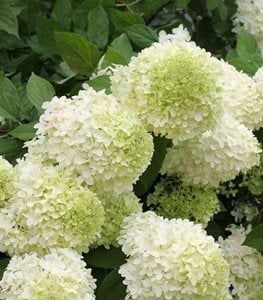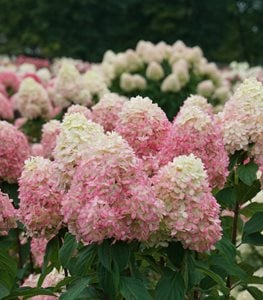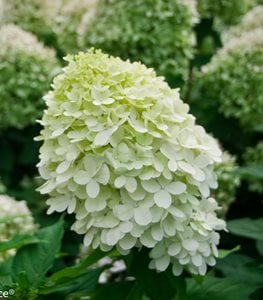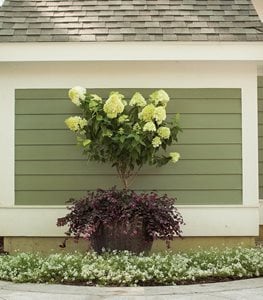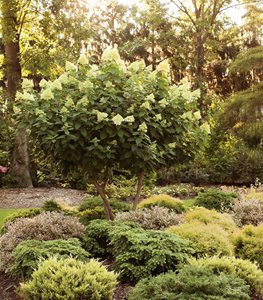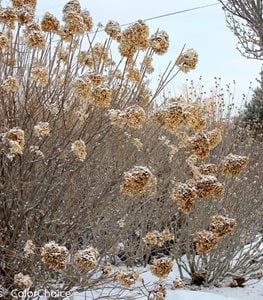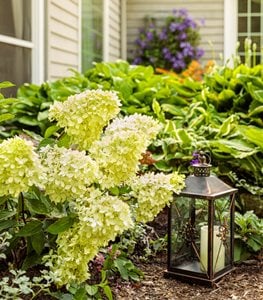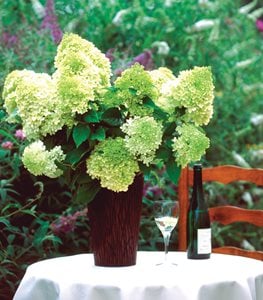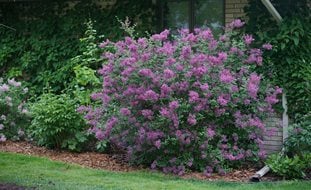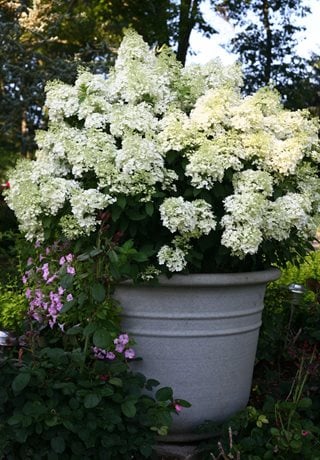HOW TO GROW AND CARE FOR ‘LIMELIGHT’ HYDRANGEA
Add this popular shrub to your yard for spectacular late season color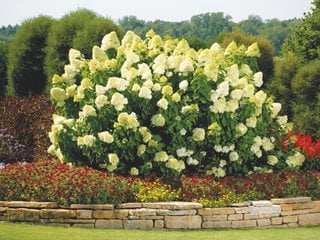
'Limelight' hydrangea. Photo by: Proven Winners.
‘Limelight’ is one of the most popular hydrangea varieties, and for good reason. The large, showy, cone-shaped flowers occur for weeks in late summer and fall, adding color and drama to the late season garden. ‘Limelight’ hydrangea is exceptionally hardy, down to USDA Zone 3, making it a good choice for colder climates.
This low-maintenance deciduous shrub is especially versatile in mixed borders, woodland gardens, as hedging or screening, in containers, foundation plantings, or as a focal point. ‘Limelight’ hydrangea pairs well with many other plants with fall interest. Here’s how to grow and use ‘Limelight’ in your landscape.
On this page: Basics | Planting | Care | Pictures | FAQs | Landscaping Tips
On this page:
- BASICS
- PLANTING LIMELIGHT HYDRANGEAS
- LIMELIGHT HYDRANGEA CARE
- PICTURES OF LIMELIGHT HYDRANGEAS
- FREQUENTLY ASKED QUESTIONS
- LANDSCAPING TIPS
BASICS
Botanical name:
Hydrangea paniculata 'Limelight'
Zones:
3-9
Exposure:
Full sun to partial shade
Size:
Original 'Limelight': 6 to 8 feet tall and wide; Limelight Prime®: 4 to 6 feet tall, 4 to 5 feet wide; Little Lime®: 3 to 5 feet tall and wide.
Bloom time:
Late summer to fall
Plant type and growth habit:
‘Limelight’ is a multi-stemmed deciduous shrub with a dense bushy habit. Plants can be also trained into a tree form.
Flowers:
Large flower heads up to 12 inches long are cone shaped, with clusters of tiny four-petaled florets. Flower color starts out lime green, fading to shades of creamy white, pink, rose, and burgundy. The blooms are exceptionally long-lasting in cut flower arrangements, either fresh or dried.
Foliage:
Dark green oval leaves have a pointed tip and slightly serrated edge.
Other attributes:
Flower heads last for months, adding winter interest to the landscape.
PLANTING 'LIMELIGHT' HYDRANGEAS
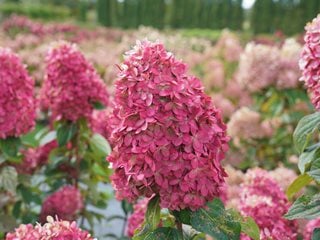
Limelight Prime® hydrangea in full color. Photo by: Proven Winners
When to plant:
Plant during milder months in spring or fall to avoid transplant shock from extreme cold or summer heat.
Where to plant:
Choose a sheltered site that gets at least 4 to 6 hours of direct sunlight throughout most of the growing season. Protect from hot afternoon sun in hotter climates.
How to plant:
Loosen soil in the planting area and amend with compost or other rich organic matter. Dig a hole twice as wide and the same depth as the root ball. Remove plant from the nursery container and loosen roots if potbound. Place in the hole so the top of the root ball is level with the surrounding soil. Fill in the hole with soil, tamp down gently to remove air pockets, and water thoroughly. Provide regular water until plants are established.
'LIMELIGHT' HYDRANGEA CARE
Temperature:
This hydrangea variety does best in cool to moderate temperatures. In hotter climates where nighttime temperatures are consistently 70°F or higher, flowers may turn brown instead of aging to pink.
Soil:
‘Limelight’ hydrangea is tolerant of different soils, though does best with well-drained soil and a slightly acidic to slightly alkaline pH. Unlike bigleaf hydrangea (Hydrangea macrophylla), soil pH does not affect flower color. Good drainage is essential to prevent root rot. Plants are shallow rooted and will benefit from mulching to retain moisture and keep roots cool. Apply several inches of compost, shredded bark or bark chips around the base of plants each spring. For containers, use a high quality all-purpose potting mix.
Amendments and fertilizer:
Plants need little or no supplemental fertilizer. For more vigorous growth, apply a slow-release granular fertilizer in spring that’s specially formulated for trees and shrubs. Compost or bark mulch will also provide nutrients.
Watering:
Provide evenly moist conditions. Don’t allow soil to dry out, which may result in brown flowers. Water more frequently during heat and dry spells. Avoid overwatering to prevent root rot.
Pruning:
Like all panicle hydrangeas, ‘Limelight’ blooms on new wood. ‘Limelight’ hydrangea pruning should take place in late winter or early spring. Remove any dead, broken or diseased branches and cut plants back by a third of their size.
Pests and diseases:
When grown in the right conditions, ‘Limelight’ hydrangea is free of most pests and diseases. Pests can include aphids, mites, scale, slugs and snails. Diseases include bacterial wilt, bud blight, leaf spot, powdery mildew, and rust.
'LIMELIGHT' HYDRANGEAS
LIMELIGHT PRIME®
Size: 4 to 6 feet tall, 4 to 5 feet wide
This improved form is smaller than ‘Limelight’, reaching 4 to 6 feet tall and 4 to 5 feet wide. Plants begin blooming earlier than ‘Limelight’, an advantage in shorter season climates. Stems are stronger and flower colors are more vivid than ‘Limelight’.
FREQUENTLY ASKED QUESTIONS
Do ‘Limelight’ hydrangeas need full sun?
In a colder growing zone, ‘Limelight’ can tolerate full sun. For hotter climates, provide morning sun and afternoon shade to prevent flowers from turning brown.
Where is the best place to plant a ‘Limelight' hydrangea?
Provide a site with full sun to partial shade, rich soil with good drainage, and protection from winds.
What month do ‘Limelight’ hydrangeas bloom?
Depending on the climate, ‘Limelight’ hydrangea blooms starting in July or August. Limelight Prime® will begin flowering in early summer.
Are 'Limelight' hydrangeas poisonous?
Hydrangeas contain hydrangin, a compound that is toxic to pets and children. If your pet or child has ingested any part of the plant, contact your doctor, veterinarian, or poison control center. Avoid bringing freshly cut or dried hydrangea flowers indoors if your pet is prone to chewing on plants.
7 WAYS TO USE 'LIMELIGHT' HYDRANGEAS IN YOUR GARDEN
Plant a ‘Limelight’ hydrangea tree in a large container or in an island bed as an attractive focal point.
Plant a ‘Limelight’ hydrangea in an island bed as an attractive focal point.
Create a flowering hedge for privacy, to soften a fence line, or divide garden rooms.
Combine in a foundation planting with other plants that bloom at different times during the growing season for months of continuous color.
Enjoy them as fresh cut flowers, plus the blooms can be dried and enjoyed over an extended period of time

